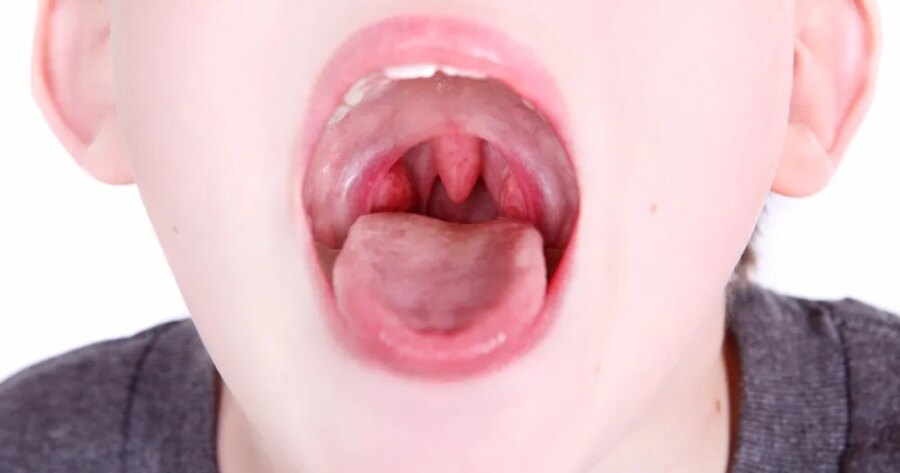Strep throat accounts for approximately 15-percent of all sore, chaffed throats that hit doctors’ offices and drop in clinics in North America. This widespread bacterial infection mostly afflicts school aged children, but adults aren’t exempt from the red, swollen, painful throat condition. Strep throat is caused by an overgrowth of group A streptococcus bacteria, which is where it takes its name.
If you’re feeling under the weather, you may have strep throat if you’re experiencing these eight warning signs…
1. Sore Throat
According to the U.S. Centers for Disease Control (CDC), strep throat is a prevalent type of sore throat that strikes children. However, it’s less common in adults. The painful, sore, red, and inflamed throat tissues that come with strep are due to an severe viral infection. Cause of strep is various, or it can be a combination of health (i.e., allergies, or viral, fungal and bacterial factors) and environmental irritants (i.e., pollution, cigarette smoke) things can cause that uncomfortable, scratchy, and raw feeling associated with step throat.
Luckily, if your doctor suspects strep throat, a quick throat swab can detemine if group A Streptococcus bacteria (or “group A strep”) is present. If it is, your physician may prescribe antibiotics to ease the pain of red, inflamed throat tissues and help encourage healing of the intense viral infection before it transforms into a more severe condition, like tonsillitis or sinusitis .
2. Swollen Glands
Feel for swollen lymph nodes in the sides of the neck if you think you may have strep throat. Inflamed tonsils also commonly cause pain swallowing. However, your doctor can’t determine strep throat without a medical test, or throat swab that will detect the presence of group A Streptococcus bacteria. This A strep bacteria often lives in our throats and noses already without causing illness. However, an over excess of bacteria will cause it to overload the system and cause strep throat.
Strep throat is most commonly spread if you make direct contact with an infected person, or more precisely, if you come into contact with fluids (most typically droplets left after a cough or sneeze). This is why washing your hands frequently during flu season is important to prevent you from touching infected droplets and then making contact with you own mouth, nose, or eyes and a A strep infection.
3. Fever & Chills
A mild to high fever of 100-degree Fahrenheit, accompanied by chills and night sweating, which rapidly decrease essential body fluids is typical with strep throat as you fight the infection. Fever can increase fluid requirements, so be sure you are drinking enough fluids to replenish those lost and to prevent dehydration.
If a high fever is present accompanied by multiple other strep symptoms, a strep test can determine your illness and dictate the need for prescription antibiotics. Obviously, strep throat is highly contagious, and those infected should take all precautions to prevent the further spread of illness by remaining home from work, school, daycare, and other social obligations until they have taken antibiotics for at least 24 to 48-hours (or according to your doctors instructions) and begin to feel better.
4. Skin Rash
Sometimes, strep throat, particularly in small children or elderly patients with weak immune systems, can cause a skin rash. This rash results from an allergic reaction to the strep bacteria in your body as well as to fever. This rash of tiny red bumps can crop up on the torso, chest, back, and neck, and you may also find little red spots (referred to by doctors as petechiae) on the area at the back and on the the roof of the soft and hard palate in the mouth. Some strains of strep throat can also lead to a fever-like rash (similar to scarlet fever). The sandpaper like rash will crop up first on the chest and neck before it spreads to the torso and over the entire body.
Prescription antibiotics may be prescribed once strep bacteria are detected (with a medical test). It’s important that you take your prescription thoroughly and completely while following the full directions of your doctor. Prescription medication is used to reduce symptom discomfort, speed the rate of healing, prevent further spread of strep infection to others, and to reduce more serious complications (i.e., sinus infection, acute rheumatic fever, and tonsillitis).
5. Difficulty Swallowing
Strep throat will often result in painful swallowing, making it hard to drink and take in adequate fluids to fight off the infection. Try gentle fluids, such as warm soup broth and herbal teas with honey, which contain salt and sugar, to help the body with fluid replenishment. You or your child may not feel like eating much while battling strep throat, which is understandable due to the raw, irritated, and inflamed tissues in the throat. However, it’s important to stay adequately hydrated and nourished in order to boost immune strength and fight the illness.
Also, while you heal, be sure to wash your hands regularly as a way to keep from further spreading strep throat to those in your household. While you are sick and even when you are taking prescription medication, don’t share cups, plates, or utensils, and cover their mouth completely when coughing and sneezing to keep others from getting sick.
6. Headache
Headache often results from dehydration in strep throat patients, but it can be a flu-like symptom, along with fever, that is often shrugged off as nothing consequential. Fever is also common as the body fights off foreign invaders. However, if fever persists, even after you’ve been prescribed drugs to help fight the illness, see your doctor immediately.
If you have strep throat, your doctor will likely prescribe medications to help boost immunity, lessen symptoms of strep throat, and quicken your recovery time. Be sure to follow your doctors orders when taking your prescription medication. For instance, follow dosage closely and finish the entire prescription, even if you start feeling better and think you don’t need it any longer. If you stop taking antibiotics early, you risk infecting others as well as reinfecting yourself.
7. Muscle Pain
As with any type of illness, like colds and influenza, sore, achy muscles and general flu-like symptoms, including neck and head pain, and stiffness of the joints are very common, particularly for those fighting off a bacterial strep infection. You may also notice that you lymph nodes, or the glands in your neck, become tender to the touch, swollen, and hot to the touch.
Penicillin or amoxicillin are two antibiotics that are often prescribed by doctors for a period of 10 days, to be taken daily, even when symptoms totally disappear. In addition to helping your throat feel better, antibiotics will relieve muscle aches, and neck and shoulder sickness. Also, sip warm liquids, such as soothing lemon tea or tea with honey to promote relaxation and a good night’s sleep as you fight off illness. If muscle pain is severe, talk to your doctor about taking over-the-counter pain medications (i.e., acetaminophen) to see if it’s safe to combine with antibiotics.
8. White Patchy Throat
We all know that raw, scratchy, irritated sensation that hits us at the back of the throat. Although, it can innocently be the result of dry air, winter allergies, or a common cold. However, if the culprit is strep, a type of highly contageous bacterial infection, that sore, inflamed, raw throat will persist and it can be dangerous if goes untreated.
In severe cases of strep throat, you may notice that the back of the throat appears swollen and red with white patches and visible pus spots along the tonsils. Open and and saying “Ahhh” to your doctor, might reveal the presence of strep bacteria, which often leaves white patches in the back of the mouth (on the soft and hard palate) as well as on the throat and tonsils, along with red swollen tissues.



